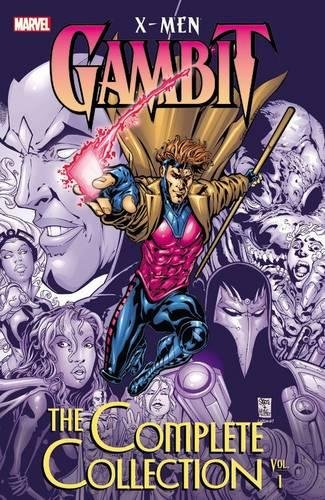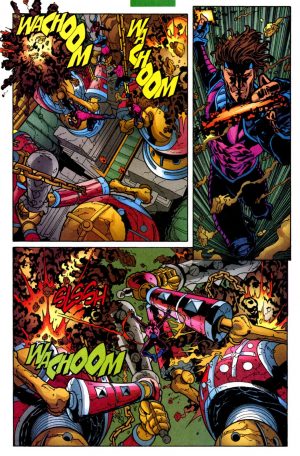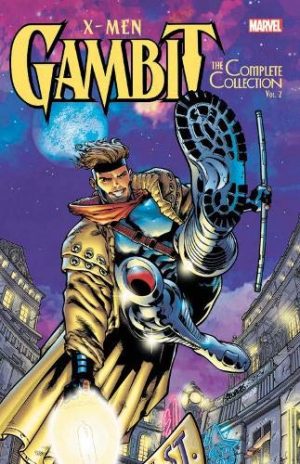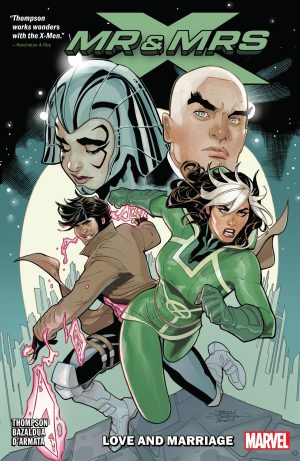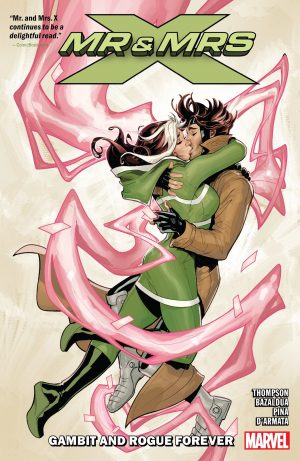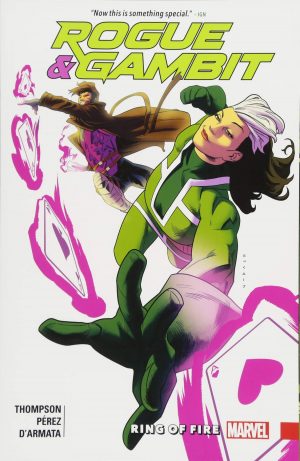Review by Ian Keogh
This bulky volume presents half of Gambit’s series from 1999-2001, and after a form of teaser prologue Fabien Nicieza and Steve Skroce’s opening chapter is almost the textbook example of how to introduce a character to new readers. They first establish the impossibility of stealing something, then show Gambit using his trickery and powers to steal it, and follow that by running through his complicated New Orleans background, and his association with the Thieves’ Guild, along the way explaining the Assassin’s Guild. That’s followed by exploring his friendships with the X-Men and a second thieving job. It’s fast paced and wonderfully realised by Skroce, who must have spent hours filling the backgrounds for a complete environment. At times panels are too busy and too closed-in, while some figures will make you cringe, but the enthusiasm carries the art a long way, and some responsibility for the crowded look is down to Nicieza’s verbose form of writing.
Gambit’s mutant ability is to channel explosive energy into objects he then throws before they detonate, to which he adds a formidable athleticism. The prologue establishes how he owes his life to someone calling themselves New Sun, and that debt takes precedence over other allegiances. Complicating matters are X-Cutioner, an armoured assassin taking it on himself to kill wayward mutants, and a woman named Fontanelle invading dreams, both occupying a lot of space every chapter, but largely repeating themselves. It’s a long way into Vol. 2 before that’s resolved.
Although Skroce’s art is better than what’s perceived as Marvel’s 1990s look, these stories otherwise very much conform to the template of big images prioritised and constant rush from place to place with a battle every time there’s a pause. It’s more obvious when other artists draw Gambit, such as Walter McDaniel on the explanation of the boost to Gambit’s powers, that pretty much an X-Men story. By midway Skroce is credited as co-plotter, and two chapters with which he has no involvement are more connected with 1999’s X-Men continuity than anything Gambit is involved with. They kind of make sense, but it’s also obvious there’s more going on, and the portentous comments irritate.
The final two chapters are the most entertaining. We see Gambit’s father during World War II with Sgt Fury and the Howling Commandos, learning more about a device mentioned previously, and the collection ends with the best story as Daredevil drops by. It’s far more entertaining than the earlier team-up with Blade, has no connection with ongoing storylines and has a clever plot leaving everyone satisfied.
Because Nicieza loves a reference, it glues much of the content in time beyond the art, and his stories cry out for the occasional change of pace. However, he makes good use of who Gambit is and what he can do, and anyone who loves the character might want to investigate, while acknowledging at the same time it’s unlikely to make new converts. Volume two completes Nicieza’s run, but this is as good as gets.
